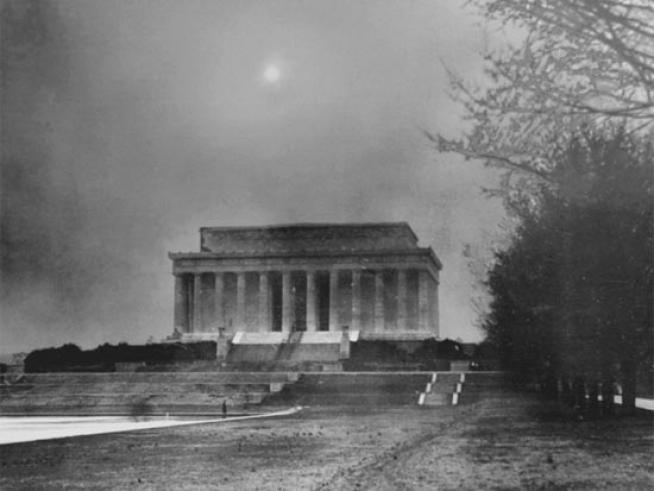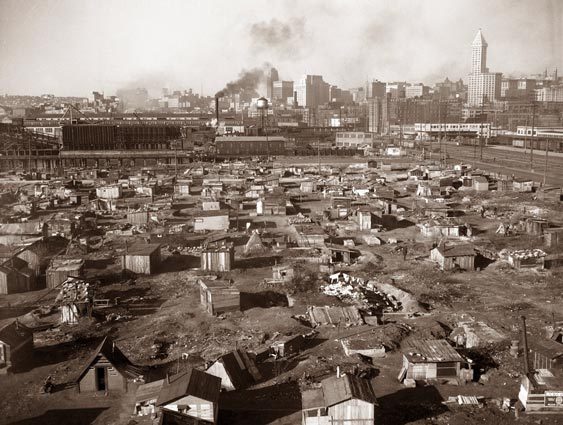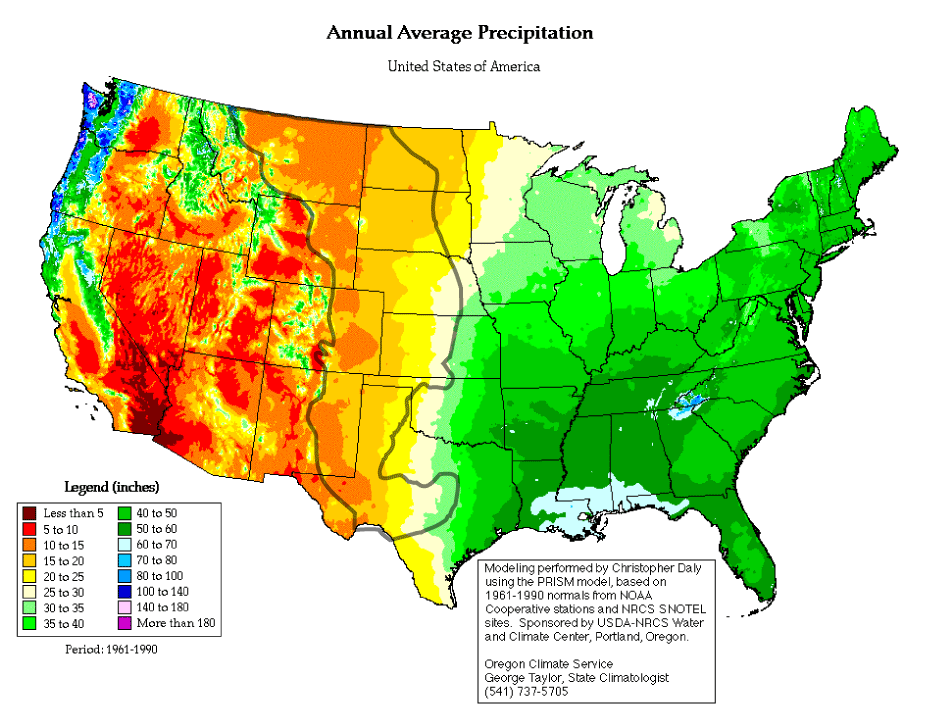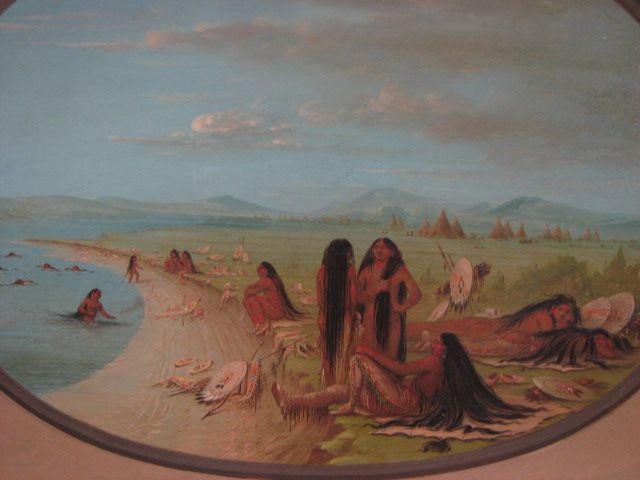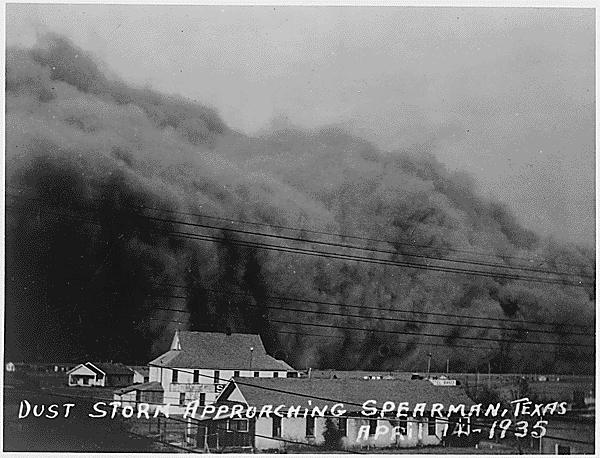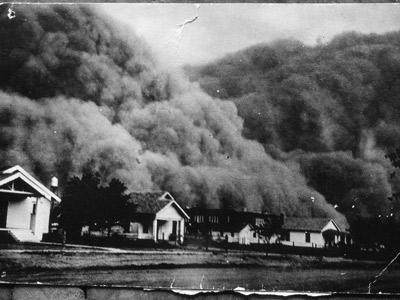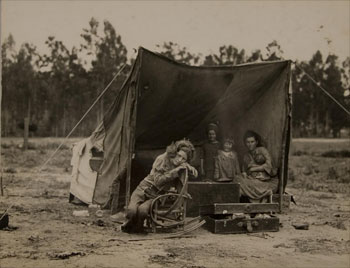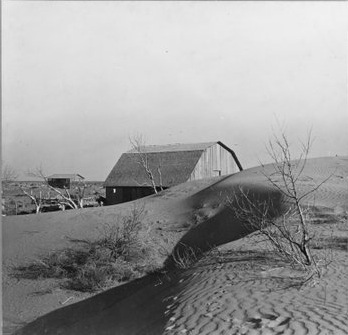 Book notes: The Worst Hard Times
, by Timothy Egan.
Book notes: The Worst Hard Times
, by Timothy Egan.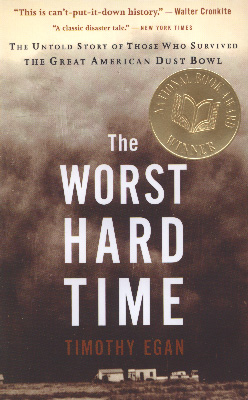
What the hell happened to the soil?
![]()
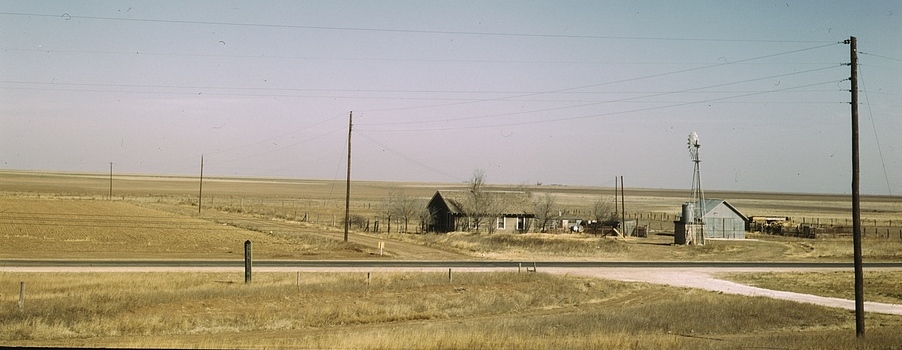 Small farm in Amarillo Texas, 1930s.
Small farm in Amarillo Texas, 1930s.
An American Tragedy: the inescapable necessity of "ending the waste of our land"
Key passages and ideas
"There goes Oklahoma," the Lincoln Memorial in Washington D.C. at the end of the week of April 15 – 19, 1935.
Economic Prelude | Hoover's Dreams | Congress | Map | Treaties | Sense of Doom | Promises | In Retrospect | Reforms | Contents
"What Bam White saw on the road made him shudder. There was a big 'Hooverville' in Oklahoma City, thousands of people living out of orange-crate shacks or inside mildewed, rusted out hulks of junked cars."
p. 128.
The irony of this Seattle Hooverville is Hoover thought poverty would be eliminated through the free-market, affordable home-ownership, and competition.
First came the tragedy of settling in an unsettled land encouraged by rising food prices, war, and real-estate speculation. Then came the tragedy of overproduction and the incapacity to sell farm products at a price sufficient to cover the costs of marketing perishable food-stuffs. Then people lost their jobs in the Great Depression of 1929-1939; unable to buy food at any price, families lost their savings, then their homes, and all of their self-respect. By 1932 one in four people was without work in a nation dedicated to working hard and saving for a future that disappeared over-night.
At last – as if sin had been manifest in land-use practices – came the dry years, the failure of mountain snows, rain vanished from the prairies, and winds that once pollinated the most productive grasslands in the world began to blow steadily across these plowed plains. "The wind, Oh, the wind, the wind." (Lizzie White, p. 179.) Finally in 1933, the harbinger gales descended on these nesters whose "Fields were bare, scraped to hardpan in places, heaving in others. The skies carried soil from state to state." As if nature insulted by human ignorance drew back to lunge at these intruders, "With no appreciable rain for two years, even deep wells were grasping to draw from the underground reservoir. One late winter day in 1933, . . . at mid-day the Sun disappeared." Farmers on the high plains witnessed "clouds" that "dumped layers of dust, one wave after another . . . ." on these unsuspecting settlers who "had to shovel furiously to avoid being swallowed by the enraged prairie." This arid landscape deprived of water did the strangest thing by arising into the heavens and choking the life out of the very lungs of the settlers who had so long feasted, fattened, and fostered farmsteads on these precarious plains.
Egan, p. 136.
Homelessness || Introduction | Contents | Background | Select Chapters | 1932 Election | Photographs | Conservation || Outcomes
Herbert Hoover, a Stanford University graduate, fed Belgium after the First World War, became Secretary of Commerce and then elected President in 1928, he took office in the worst year in the nation's memory. People who lost their homes and crowded into shacks called these temporary homes of garbage crates and cardboard, "Hoovervilles."
"Hoover was an engineer and entrepreneur who was worth four million dollars by the start of the First World War. As president his past statements haunted him like a bill collector.... 'the United States was close to eliminating poverty forever'... Hoover had said in the giddy days, when America was a crap shoot with good odds."
p. 129.
Live Through This, | The Wanderer, | New Leader, New Deal, | Black Sunday, | Contents
The Worst Hard Times: One: Paradox | Two: Folly & Fix | Three: Sensory reality
"Congress had been sitting on Hugh Bennett's plan to save the Great Plain's from itself."
"Bennett had been trying to draw a big picture, to impart some sense of the magnitude of the collapse of the plains. It was not just black blizzards, starving cattle, and an exodus of hollow-eyed people. The human stories, each sad in their own way, were part of a larger tragedy: the collapse of big part of mid-America. One hundred million acres had lost most of its topsoil and nearly half had been, 'essentially destroyed' and could not be farmed again, Bennett said. Think about the size, Bennett said: an area stretching five hundred miles north to south and three hundred miles east to west was drifting and dusted; two-thirds of the total area of the Great Plains had been damaged by severe wind erosion – an environmental disaster bigger than anything . . . ."
pp. 223-224.
Introduction: "Live Through This."
"The land convulsed in a way that had never been seen before, and it did so at a time when one out of every four were out of work. The people who live there now, the ones who never left, are still trying to make sense of why the earth turned on them."
p. 2.
Contents | key | recurrence | senses | peak | Native peoples | photographs | Kansas | 1932 | New Deal | Conservation
Springfield, county seat of Baca County, Colorado.
has a "frontier" density of population today, but not then
"The town has the High Plains look, that slow-death shudder."
"All around . . . the land is drying up again, a few years into the new century. The snow never came to many parts of the Rockies this year [2005], and when it fell, there was nothing left."
"A second Dust Bowl, they say."
pp. 3-4.
Ike Osteen
"His father had followed the old Santa Fe Trail in 1909, the year Congress tried to induce settlement in one of the final frontiers of the public domain the arid western half of the Great Plains – with a homestead act that doubled the amount of land a person could plow up and own to 320 acres. The last homestead act was a desperate move, promoted by railroad companies and prairie state senators, to get people to inhabit a place that never held anything more than a few native hunting camps and some thirteenth century Indian villages."". . . there was supposed to be a dam going up on the Cimarron River in no Man's Land . . ."
p. 4.
"The wind powered the a windmill , which pumped water 140 feet up from the Ogallala Aquifer."
"That was all you needed to stay alive: water and grass."
"Without the wind, there was no water, not cattle, no life.""Earlier, the land had been overturned in a great speculative frenzy to make money in an unsustainable wheat market. After a big run-up, prices crashed."
"Dust clouds boiled up, ten thousand feet or more in the sky, and rolled like moving mountains – a force of their own."
"The eeriest thing was the darkness"
"There'd be days you couldn't see a hand in front a' your face.""a storm in May 1934 carried the windblown shards of the Great Plains over much of the nation. In Chicago, twelve million tons of dust fell."
Contents | key | recurrence | senses | peak | Native peoples | photographs | Kansas | 1932 | New Deal | Conservation
You could see it, but they could taste it.
"Cattle went blind and then suffocated . . . . [their] stomachs stuffed with fine sand."
p. 5.
"Children coughed and gagged, dying of something the doctors called "dust pneumonia."
pp. 5-6.
"Nothing compares to the black-dusters of the 1930's, he says, a time when the simplest thing in life – taking a breath – was a threat.
"Her lungs scarred from dust pneumonia, . . ."
p. 6.
"By 1934, the soil was like fine-silted flour, and the heat made it a danger to go out many days."
p. 7.
In western Oklahoma temperatures: 100? and even reached 117?
"When storms hit, they usually came without warning . . . . Dusters went undetected until they rolled into a neighboring town and a phone link was set in motion."Black Sunday 1935 described: "In the afternoon, the sky went purple – as if it were sick – and the temperature plunged . . . . The air crackled with electricity . . . . Birds screeched and dashed for cover. As the black wall approached, car radios clicked off, overwhelmed by the static."
p. 7.
"More than 300,000 tons of Great Plains topsoil was airborne that day." April 14, 1935.
p. 8.
"If nature is out of whack, then we'll fight with everything we got, they said in town meetings."
p. 8.
Contents | key | recurrence | senses | peak | Native peoples | photographs | Kansas | 1932 | New Deal | Conservation
“At its peak the Dust Bowl covered one hundred million acres. Dusters swept over the northern prairie as well, but the epicenter was the southern plains. An area the size of Pennsylvania was in ruin and on the run. More than a quarter million people fled the Dust Bowl in the 1930s.”
"The families in the heart of the black blizzards were farther west [than the exodusters -- tenant farmers in Oklahoma and Kansas that Steinbeck wrote about.] . . . Not much was heard about the people who stayed behind, for lack of money, or lack of sense . . . ”
p. 9.
“More than a quarter million people fled the Dust Bowl in the 1930s.”
"the people who hunkered down out of loyalty or stubbornness, who believed in tomorrow because it was all they had in the bank."
pp. 9-10.
"Yet most people living in the center of the Dust Bowl, about two-thirds of the population in 1930, never left during that hard decade."
p. 10.
"the only growth industries now are pigs and prisons."
"But nothing matched the black blizzards. . . . the nation's worst prolonged environmental disaster."
"People who lived through the whole thing. . . are with us still, shelters of living memory."
p. 10.
Contents | key | recurrence | senses | peak | Native peoples | photographs | Kansas | 1932 | New Deal | Conservation
THE PROMISE: The Great Plow-up, 1901-1930.
Chapter 1: "The Wanderer"
In chapter 1: we meet the Whites 1926, & Dawsons, with mention of the Osteens (1909) all in Dalhart, Texas.
The southern plains in the winter 1926:
"There wasn't even grass for the horse team; the sod that hadn't been turned was frozen and brown. Windmills broke the plain, next to dugouts and sod houses and still-forming villages."p. 14.
Cimarron -- {Mexican Spanish & Apache derived word] means wanderer
pp. 14-15.
". . . the Canadian River, the only reliable running water in the region."
Coronado, 1541
"Indians on foot passed through following bison."
the Querechos (early Apache people were here before the horses came 1670s)
Comanche, "At their peak in the mid 1700s, they numbered about 20,000." Horse riders who were Shoshones from an area of Wyoming, had migrated south to hunt bison, antelope and deer.
p. 15.
"Bison gave them just about everything they needed: clothes, shelter, tools, and of course, a protein source that could be dried, smoked, and stewed. Some tepees required twenty bison skins, . . . ."
p. 16.
Medicine Lodge Treaty of 1867
"the Great American Desert, the area south of the Arkansas River. At the time, there was no more disparaged piece of ground in the coast-to-coast vision of manifest destiny.
"To the Indians would go the land that nobody wanted.”
George Catlin's 1830s paintings of the plains' First Nations. Having painted the Native peoples of these Great Plains, Catlin was prompted in the 1830s to suggest we create national parks to protect the bison and grasslands sustaining their way of life from intrusive settlements."the prairie where the wind blew free. . . . where there were no enclosures, and where everything drew free breath." Ten Bears, Comanche
1870-72 "Anglo hunters invaded the treaty land"
"They killed the bison by the millions stockpiling hides and horns for a lucrative trade back east."p. 17.
"Empty of bison and Indians, the prairie was a lonely place; it had taken barely ten years to eliminate them. In victory, the American government was not sure what to do with the land."
"The High Plains continues to be the most alluring body of unoccupied land ". . . USGS survey reported in the 1900s
A land of "resilient buffalo turf, and nutrient rich grama [grass], part of what Coronado called 'an immensity of grass.' Horizon to horizon, buffalo heaven and a cattleman's dream. . . . "
"The New World's magical endowment – grasslands covering 21 percent of the United States and Canada, the largest single ecosystem on the continent outside of the boreal (northern) forest."
470 native species of grasses ". . . nearly twenty million acres, was grass. In the Spring, the carpet flowered amid the green, and as wind blew, it looked like music on the ground."
p. 19.
"Great American Desert. It was Stephen Long, trying to find something of value in the treeless wilderness who first used those words in 1820, later printed on maps that guided schooners west. It would stay as cartographic fact [map maker's markings] until after the Civil War, when the Great American Desert became the Great Plains."
p. 22.
"Zebulon Pike . . .had compared it to the African Sahara in his [1806] report to the President. " [Jefferson]
"It was a vast empty sea, invariably described as featureless and frightening by the Americans who traveled through it."
Stephen Long "that it is most wholly uninhabitable by a people depending on agriculture for their subsistence."p. 23.
"The train ride was free."
"sure it rained less than 20 inches per year, . . . the accepted threshold for growing a crop."
dry farming, irrigation, & dryland wheat were promoted by the land syndicate & the USDA
"Rain follows the plow? Damn right!"
"The Santa Fe Railroad printed an official looking progress map, showing the rain line –twenty inches or more, annually – moving west about eighteen miles a year with new towns tied to the railroad.
p. 24
XIT Ranch hands - cowboys knew that "the Panhandle was no place to break sod."
"the land was high and cold, with little drainage and nearly treeless in its entirety."
p. 25.
"As for rainfall the average was sixteen inches a year, not enough, . . . to sustain a crop."
"the elevation was 4,600 feet."
"The Panhandle was good for one thing only: growing grass."
"Most of the land was short buffalo grass, which, even in the driest, wind-lacerated years, held the ground in place."
"This turf had supported the southern half of the great American bison herd, up to thirty million animals at one point."
"The best side is up , . . don't plow it under."
But "Nesters and cowboys hated each other; each side thought the other was trying to run the other off the land."p. 25.
"Miles to water, miles to wood, only six inches to hell."
p. 26.
"Prohibition saved the broomcorn farmers, making grain more valuable as alcohol. . . ."
p. 27.
Osteen family - a barrel of corn whiskey every day "every day, nearly every year of Prohibition."
p. 28.
Dr. George Waller Dawson and his wife, Willie-Catherine ran the sanitarium:
"The nest egg would be in the land." "It was their last best chance, he told his family."
p. 29.
Three months of cowboy's wages were equal to $100
6,000 people lost their lives in the Galveston hurricane of 1900"The ranching went well, but the real money was in town building."
p. 30.
"get a small piece of the world and make it work."
p. 31.
Contents | key | recurrence | senses | peak | Native peoples | photographs | Kansas | 1932 | New Deal | Conservation
Chapter 16: "Black Sunday"
Nebraska, Kansas, Texas, and beyond.
That day "Ike Osteen was five miles away from his homestead,... when he noticed rabbits and birds fleeing south. This he had never seen: a desperate migration, the birds screeching by his car, the rabbits in a sprint, all headed in the same direction. It was curious because there still was no wind , and the early afternoon was as luminous as the morning had been.… Then he saw it, a few minutes past 4 P.M. ..... It was the mother of all dusters."
"Ike felt that static shoot through the inside of the car."
p. 206.
"... he thought of the Red Sea closing in on the Israelites." Woody Guthrie, Texas folk/blues-singer.
April 14, 1935
"It took an hour for the Black Sunday duster to travel from the border towns to Amarillo. At 7:20 PM the, the biggest city in the Texas panhandle went dark, and its 42,000 residents choked on the same thick mass that had begun its roll in the Dakotas, clawing the barren plains, charring the sky in seven states, producing enough static electricity to power New York, a fury that has never been duplicated."
In retrospect:
The Election of 1932."Roosevelt roused people with a blend of hope and outrage. He knew hardship and a kind of emotional panic that comes when your world collapses.
p. 130.
"Roosevelt said it made no sense to gin [start] up the machines of production if people could not afford to buy what came out of the factory."
"faith 'in the forgotten man at the bottom of the economic pyramid'."
FDR, 3-7-1932
p. 130-131.
"They are receiving less than the cost to them of growing these farm products."
p. 131.
"Free-market agricultural economics was over, for good. Look what it had done, Roosevelt said: America had produced far more food than any country in history, and farmers were being run off the land, penniless, while cities couldn't feed themselves."
"Hoover had been leery of meddling with the mechanisms of the free market."
Homelessness || Context | Select Chapters | 1932 Election | Photographs | Conservation || Outcomes
Creating the institutions to implement conservation policies:
Harold Ickes was the Secretary of the Interior who had wanted to create a Department of Conservation, but was opposed.
April 27, 1935 Congress created the Soil Conservation Service in the Department of Agriculture, USDA.
The United States was the first nation in the world (possibly after Russia) to create a soil conservation bureau as part of its Federal government.
Hugh Hammond Bennett, instead, was made Chief of the Soil Conservation Service
Agricultural Adjustment Act created the Agricultural Adjustment Administration or AAA
&
CCC is the Civilian Conservation Corps
"They would try and stitch the land back together. Build dams, bridges. Restore forests. Keep water from running away."
"That son of a Carolina cotton farmer, Big Hugh Bennett, continued to rage against the killing of the land by his countrymen. What was happening in Oklahoma , in particular appalled him."
p. 133.
"…he had an earthy populism."
"Most scientists did not take Bennett seriously. Some called him a crank. They blamed the withered Great Plains on the weather, not on farming methods."
"Basic soil science was one thing but talking about the fragile web of life and slapping the face of nature–their kind of early ecology had yet to find a wide audience."
The Conservation ethic, essay of Aldo Leopold -- a game biologist in Wisconsin.
few paid attention.
"Bennett said that Americans in the midsection had farmed too much, too fast. The land could not take that kind of assault. The greatest grassland in the world had been hammered and left without cover."
Director of the Interior Department's Soil Stabilization Office.
p. 134.
Homelessness || Introduction | Context | Select Chapters | 1932 Election | Photographs | Conservation || Outcomes
Chapter 9: "New Leader; New Deal"
The drought did not take a holiday....The wind rumbled through and tore off great sheets of prairie soil. As storms darkened skies, people started to believe they were being punished for something awful."
p. 135.
Kansas farm and fields in 1930s on the high plains.
"The land would not die and easy death. Fields were bare, scraped to hardpan in places, heaving in others. The skies carried soil from state to state.
p. 136.
"For the record there had never been a drier summer." 1933 and then 1934 and again in 1935.
p. 140.
The Worst Hard Times, Timothy Egan.
Homelessness || Introduction | Context | Select Chapters | 1932 Election | Photographs | Conservation || Outcomes
Environmental science of the dust bowl.
On April 27, 1935 Congress authorized [ PL74-46 ] the Soil Conservation Service in the Department of Agriculture stating that "wastage of soil" is "a menace to the national welfare."
![]() Timothy Egan, The Worst Hard Times. Boston: Houghton Mifflin, 2006.
Timothy Egan, The Worst Hard Times. Boston: Houghton Mifflin, 2006.
April 14, 2015 – 80th Anniversary of Black Sunday, 1935.
Three study sections: One: Paradox | Two: Folly & Fix | Three: Sensory reality
“At its peak the Dust Bowl covered one hundred million acres.”
page 9.
I • PROMISE 1901-1930
II • BETRAYAL, 1931-1933
III • BLOWUP, 1934-1939
I • PROMISE 1901-1930
1. The Wanderer, Bam White’s family migrates on to the high plains to get a ranch in Amarillo
2. No Man’s Land, “It was founded on a fraud. Except there was not a single tree in Boise City.” Le bois French word for trees
3. Creating Dalhart, Southern panhandle Plains “the old XIT grasslands were still being carved up….ranches were disappearing by the day”
4. High Plains Deutsch, “by the summer of 1929 the United States had a food surplus….There was a glut in Europe as well.”
5. The Last Great Plow-up, The stock market crashed on October 29, 1929.
II • BETRAYAL, 1931-1933
6. First Wave, 6-27-31, the bank did not open for business
7. A Darkening, “two years into a drought so severe that less rain fell in eastern Montana than normally fell in the desert of southern Arizona.”
8. In a Dry Land, “Life without water did strange things to the land.”
9. New Leader, New Deal, FDR and the promises of 1931-1936 – conservation anew
10. Big Blows, “The land would not die an easy death.…The skies carried soil from state to state.”
III • BLOWUP, 1934-1939
11. Triage, “There was not a buyer in the hemisphere for the wretched looking cattle stumbling over the prairie… all bound up with dust.”
12. The Long Darkness, “The third option they could steal food.”
13. The Struggle for Air, “Life in the galloping flatlands was a pact with nature. It gave as much as it took, and in 1935, it was all take.” P. 175
14. Showdown in Dalhart, “Conservation, --that was the new word coming from Big Hugh Bennett.” 178.
15. Duster’s Eve, “This year 1935, had been one duster after another, four years into the drought…”
16. Black Sunday, “Winds screamed over the grasslands, carrying dust so heavy that visibility was less than 100 yards.” “Charring the sky in five states.” P. 221
17. A Call to Arms, “midnight at noon, a duster wiped out the sun!” “rule life in the dust bowl of the continent.” P. 222
18. Goings, “Most Baca –ready to fold-- residents would have starved without the government.”
19. Witnesses, “At the darkest hour,…a farmer’s life . . . during a decade when homesteads became graveyards.” Don Hartwell, 1/1936, p. 242.
20. The Saddest Land, “More than 850 million tons of topsoil had blown off the southern plains in the last year.”
21. Verdict, “Bennett believed that the Great Plains could be saved; it did not have to blow away and lose its people.”
22. Cornhusker II, “it took a full days work at one of the government road jobs to fill up your tank.”
23. The Last Men, “Nobody had money for tractor fuel, or hiring farm hands, or even for buying seed.”
24. Cornhusker III, “An examination of the tree found that Nebraska had been through 20 droughts in 748 years.” “…three lame horses and a single dog.”
25. Rain, “its CCC soil saving and tree planting crews to the Panhandle, and when they came they were greeted like firemen at ablaze.” “nearly forty million saplings, 3,600 miles of living hope planted. . . .”
“Roosevelt had always believed in the power of restoration.” P. 307
Epilogue, “The high Plains never fully recovered from the dust bowl.”
Homelessness || Introduction | Context | Select Chapters | 1932 Election | Bennett | Photographs | Conservation || Outcomes
Hugh Hammond Bennett's ideas, film of
United States Department of Agriculture, is the USDA, with a cabinet level Secretary of Agriculture.
Soil Conservation Service, USDA, 1935.
Dust Bowl, origins of the term.
FSA: In the Farm Security Administration's photographic archive collection there are 164,000 images, taken between 1937 and 1945.
Natural Resources Conservation Service - NRCS (1994)
Contents | key | recurrence | senses | peak | Native peoples | photographs | Kansas | 1932 | New Deal | Conservation

